As the champion of designers everywhere, we at Creative Bloq are keen to encourage work opportunities for the creative community. But there are limits.
Some logo designs are so beloved, so iconic, that as long as we live, we simply never want to see them radically redesigned.
That doesn't mean we're opposed to tiny tweaks or subtle refreshes, every now and again, to adapt these assets to modern style sensibilities and the demands of new devices.
And we're not opposed to new, adapted versions to give these logos life in new arenas such as motion design, stereoscopic 3D, virtual reality and beyond.
But when it comes to the underlying design of these decades-old logos, it's a case of 'If it ain't broke, don't fix it'. And anyone who tries will have to come through us first.
01. Coca-Cola

Coca-Cola has undergone a lot of changes since it first launched its trademark in 1887, from the removal of cocaine as an ingredient in 1893 to its distribution in Burma in 2012, making the drink officially available in every nation except Cuba and North Korea. But one thing has stayed pretty consistent throughout, and that's its instantly recognisable logo.
This classic cursive was introduced on May 8, 1886, and has remained largely unchanged since, attracting only minor tweaks and a colour change (black to red) along the way.
Get the Creative Bloq Newsletter
Daily design news, reviews, how-tos and more, as picked by the editors.
Its ubiquity throughout the 20th and 21st centuries means that today it's one of the most easily recognised pieces of writing on the planet. This fact was made evident by a billboard campaign in 2000 which featured zoomed in, closely-cropped sections of the logo. Even with only these tiny portions of the logo visible, it was still instantly recognisable as Coca-Cola.
02. Nike
Whenever huge amounts of time and budget are being spent on the tortuous process of creating a big brand's identity, it's instructive to remember that some of the world's best known logo designs came from much humbler origins.
Take the world-famous Nike tick (or 'swoosh'), which was sketched by Portland student Carolyn Davidson in 1971, and for which she was paid the grand sum of $35.
Later on, in 1983, she received a gold swoosh ring embedded with a diamond and an envelope containing Nike stock... and rightly so. Now one of the world's most recognisable emblems, this symbol embodies an upbeat and positive feel that can be extended to literally every sport, proving that it's often the simplest ideas that are the best.
03. Playboy

Another relic from the days when logo design was cheap and cheerful, the Playboy rabbit took half an hour to draw in 1953, according to Art Paul, the magazine's art director at the time. In fact, he believes if he'd spent more time finessing it, the logo might not have turned out so well.
This stylised silhouette, wittily playing on the virility of the rabbit species, hasn't just survived half a century of sexual revolution and counter-revolution intact, it's more or less moved from representing the business to becoming the business.
In short, Playboy's licensing of its logo – from clothes and beauty products to bars and clubs – is now one of its main sources of income. And though rumours that the magazine is to close have been flying in particular since Hugh Hefner's death, in 2014 Playboy was ranked 42nd on a list of the top 150 global licensors. Not bad for a quick sketch that was originally envisioned as an endnote for the magazine's second issue.
04. Shell
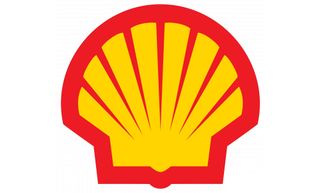
Founded in 1897, The Shell Transport and Trading Company's first logo was a mussel shell lying on its side. Seven years later, that got swapped for an upright scallop: a more confident design, suggesting a sunrise and bright new future, which has in large part survived to this day.
Shell's first service stations arrived in California in 1915. Wanting them to stand out, the firm picked bright red and yellow colours due to the state's Spanish connections. These colours became incorporated into the logo in 1948.
Then in 1971 French-born designer Raymond Loewy simplified the logo, removing some clutter to create a cleaned-up design that remains virtually unchanged to this day.
Who wouldn't want to design something that lasted four decades and counting? Above all, the Shell logo proves that crisp minimalism isn't just something that's trendy right now, but an approach that's potentially timeless.
05. Disney

Walter Elias Disney's signature must surely have become one of the most famous in history, thanks to this everlasting design. His looping script was said to have inspired this logo, which has gone relatively unchanged since the 1930s.
But did it? The internet is packed with claims that Walt's actual signature was nothing like this jolly script, along with plenty of photographic evidence to back this up. Others insist the wordmark was actually based on the signature of the Disney employee authorised to sign autographs on the great man's behalf.
Whatever the truth, this friendly logo does its job, and does it well. Instantly conveying a sense of childlike joy, it's become a byword for family fun and entertainment worldwide, as well as being incorporated into sibling logos such as those of Walt Disney Pictures and the Disney Channel.
06. Volkswagen

Volkswagen's logo has changed remarkably little in the 75 years since its inception, largely due to the simplicity of the idea: a V above a W, encapsulated in a circle, representing the straightforward and unambiguous nature of the original German 'people's car'.
But while it's done sterling service to the car maker, its popularity became a problem for some in the 1980s. After Mike D of rap group the Beastie Boys appeared on TV wearing a chrome Volkswagen emblem, attached to a chain-link necklace, Detroit area dealers reported a sharp increase in the disappearance of four-inch hood and grille emblems.
While a true design classic, the VW logo does continue to evolve. The most recent version, in 2012, has seen the shadowing and highlighting effects become distinctly more pronounced, with extra bevelling on the letters enhancing the 3D effect. A new logo to reflect a new era of electric cars is also expected soon.
07. Ford
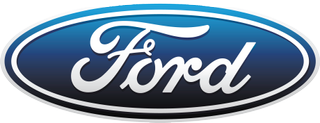
When it comes to logo design, Paul Rand (1914-1996) might be considered the heavyweight champion of all time. The American art director and graphic designer was known for his logo designs for IBM, ABC, Westinghouse, UPS, NeXT Computers and (ahem) Enron. And in 1966, he was even asked to rethink and modernise the much-loved Ford logo.
The radical new design Rand created was an impressive piece of work. But ultimately Henry Ford II couldn't bear to part with the familiar scripted oval logo, which had been used on its cars since 1928.
Originally drafted by Childe Harold Wills, an engineer and one of Ford's first executives, this iconic logo, which remains largely unaltered to this day, is rendered in Spencerian script, which is coincidentally also used in the Coca-Cola logo. And much like that iconic asset, it's now almost impossible to think of Ford's logo ever being changed dramatically – however cool the designer.
08. McDonald's
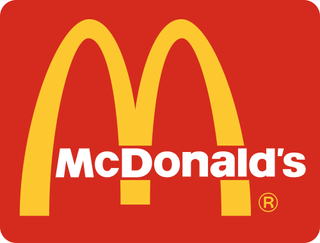
As familiar as the Statue of Liberty, and equally imbued with political and cultural significance, McDonald's iconic Golden Arches logo has virtually become a symbol of fast food itself – for hungry consumers and angry protesters alike.
The arches themselves were originally designed to be part of the building that house Richard and Maurice McDonald's first franchised outlet in the 1950s. Ultimately, the brothers instead brought in a sign-maker, George Dexter, to design two giant yellow arches that were added to opposite sides of the restaurant.
It wasn't until a decade years later, after entrepreneur Ray Kroc had bought the business, that the distinctive arches were combined into an 'M' to form its new corporate logo. The logo now appears on more than 36,000 McDonald's restaurants in 120 countries worldwide, with more branches opening every year.
09. Penguin
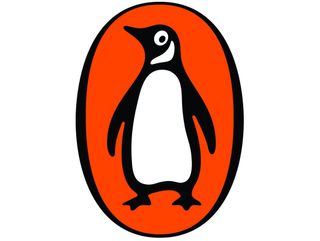
Think of publishing and you'll probably think of Penguin, thanks in part to the friendly flightless bird that adorns everything it publishes. Since its first iteration, this charming mascot has become a globally recognised symbol of good reading and good breeding.
It was originally created in 1935, when Allen Lane of the publisher Bodley Head decided to produce a new range of cheap but good-quality paperbacks, apparently inspired by the lack of decent reading material while waiting for a train in Exeter. Lane decided on the name Penguin Books at the suggestion of his secretary Joan Coles, and dispatched 21-year-old designer Edward Young to London Zoo to sketch some penguins. (He came back with the observation: “My God, how those birds stink!”)
Staring the reader straight in the eye, the emblem is so iconic, it's easy to assume it hasn't been tweaked at all over the decades. It has, however, been redrawn a handful of times, most recently in 2003 by Pentagram partner Angus Hyland, who actually made the bird 15 per cent slimmer.
10. Firefox

Another animal logo, the symbol of Mozilla's popular web browser is the most recent on our list, but no less deserved of long-term protection.
This detailed yet dramatically effective design was originally created in 2004 by Jon Hicks, based on a concept from Daniel Burka and sketched by Stephen Desroches, which Hicks then rendered using Fireworks MX.
A fiery fox encircling a stylised earth, the emblem has been subtly simplified over the years, enabling it to remain clear even at the tiny sizes demanded by mobile devices. But its essence remains: symbolising Firefox's twin aspirations for global reach and a speedy internet, it's truly deserving of the title 'modern classic'.
Related articles:

